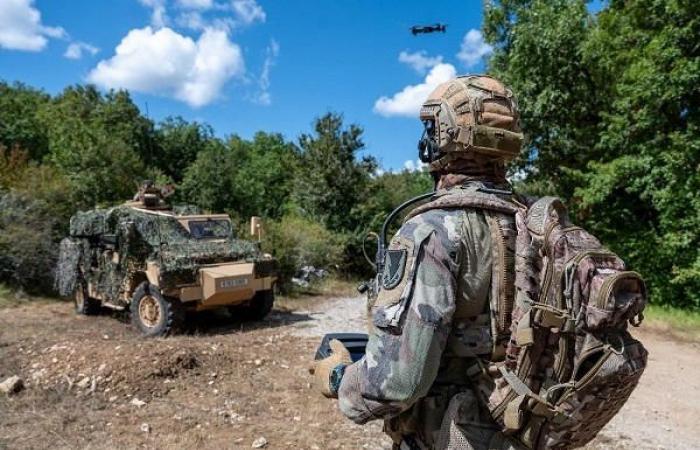As the war in Ukraine shows, quickly appropriating the most relevant innovations in order to then translate them into military capabilities can prove crucial to making a difference on the battlefield. The case for transforming FPV drones [First Person View ou pilotage en immersion] in remotely operated munitions [MTO] is an example, their use having become widespread within the Ukrainian and Russian forces.
Inexpensive to produce, “consumable” and easy to pilot, these
These devices can be extremely effective, especially since they are fast and difficult to detect, unless significant anti-drone control resources are deployed, particularly in terms of electronic warfare. And again, some models are now wire-guided, such devices do not have the expected effectiveness to counter them.
While the Military Programming Law [LPM] 2024-30 provides for a significant financial effort to acquire at least 1,800 remotely operated munitions for the benefit of the land operational force [FOT] before 2030. But they must still not be outdated by the time they are put into service. This point was also raised by General Pierre Schill, the Chief of Staff of the Army. [CEMAT]during a recent hearing at the National Assembly.
“The evolution of remotely operated munitions […] is so rapid that the question of stocks is not the only relevant analysis grid. It is important to have industries capable of producing the most up-to-date munitions possible, both in their physical and software design, including in particular artificial intelligence in order to offer capabilities to resist jamming, find targets or find their way around thanks to the analysis of images,” said CEMAT.
And to insist: “The production flow must allow training and a minimum stock. Above all, it must make it possible to increase the production rate in the event of a conflict, because building up significant prior stocks would run the risk of having obsolete ammunition. This is a new method of acquiring ammunition and one of the aspects of the war economy which requires us to review our ways of training and distributing equipment in our armies.”
That being said, participatory innovation can respond to this. Indeed, drawing inspiration from feedback [RETEX] of the war in Ukraine, an adjutant of the 1st Parachute Hussar Regiment [RHP] had the idea of a short-range remotely operated munition intended to complete the anti-tank framework of his unit, by adapting old rifle grenades to the FPV Racer drone.
“I was impressed by the capabilities of the FPV Racer drone. I told myself that it could complete the anti-tank framework of the regiment, with characteristics allowing it to be inserted between the AT4 [lance-roquettes antichar de 84 mm] and the MMP [Missile Moyenne Portée ou Akeron MP]. One of my teammates practices FPV Racer in his free time. We discussed it, we wrote specifications and we got started,” explains this non-commissioned officer, in the pages of the latest issue of Terre Mag.
The warhead of this short-range MTO is based on two older rifle grenade models, namely the AC58 and APAV40. In direct fire, they can respectively perforate 35 and 20 cm of steel.
According to the adjutant of the 1st RHP, this is to allow his regiment to have an additional inexpensive means that can be used quickly to destroy “hardened” objectives. “The idea was also to be able to adapt and modify the trajectory almost until impact, over a range of 50 to 2,000 meters, during a 30-minute flight,” he added.
The development of this MTO benefited from help provided by an engineering student, who gave advice on the design, and it was the subject of a partnership with the FabLab of Tarbes [laboratoire de fabrication ouvert]. Partnership which made it possible to manufacture several prototypes.
The project led by the non-commissioned officer is supported by the innovation cell of the 1st RHP as well as by the Battle Lab Terre and the Technical Section of the Army. It is also supported by the General Directorate of Armaments [DGA]the latter having studied the possibility of adapting the AC58 grenade to the FPV drone. “Dynamic” firing tests will soon be carried out.
Photo: Army / illustration






